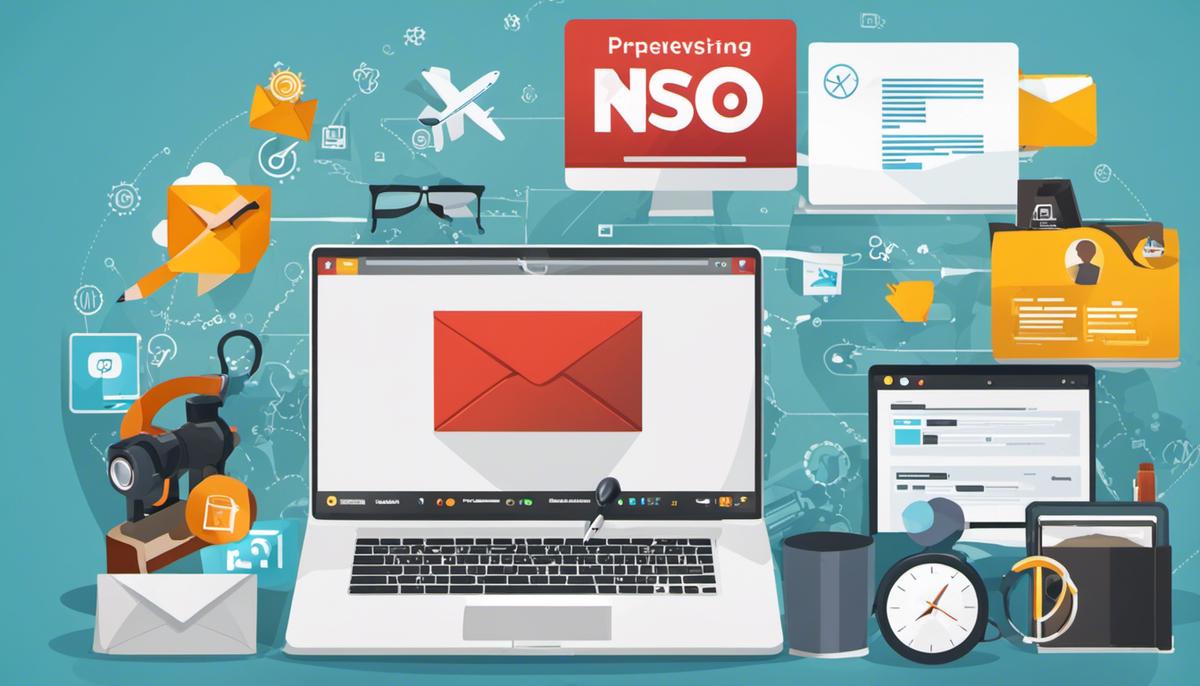In an increasingly digital world, adapting traditional business models to online platforms has become the norm. E-commerce has revolutionized the way we buy and sell goods, and among the most profitable of these models sits dropshipping. Operating a successful dropshipping business indeed requires a careful strategy, starting from identifying profitable and readily available products, finding and building strong relationships with reliable suppliers, setting up an effective online trading platform, promoting your products via modern digital marketing techniques, and retaining customers through top-notch customer service. This essay offers insights into each of these areas, providing a comprehensive guide for anyone looking to venture into the world of dropshipping.
Identifying the Right Products
In the dynamic world of e-commerce, the opportunities for entrepreneurs are extensive, the most notable being the dropshipping business model. Creating a dropshipping startup requires minimal initial investment, thereby reducing risk. However, this indeed raises a pivotal question: How does an entrepreneur identify the right products for their dropshipping business? Let’s dive straight into the insights.
Selection of products is the nucleus around which orbits the entire scheme of a dropshipping business. The success of the venture significantly hangs by the selection of products. Consequently, choosing the right products necessitates a strategic upfront approach, leveraging an understanding of market dynamics, consumer trends, and innovative problem-solving.
The initial step is conducting thorough market research, laying the foundation for all future decisions. Entrepreneurs need to stay perceptive for emerging trends and potential market gaps. Various tools such as Google Trends, TrendHunter, or even social media trends can be invaluable for trend spotting and gauging public interest in various product categories.
Simultaneously, assessing existing competition can provide beneficial insights. Comparative analysis of competing products and their performance parameters, such as sales volume, pricing, reviews, and ratings, can bring the entrepreneur to the doorstep of the right products. While it’s appealing to choose products with minimal competition, it’s equally (if not more) advantageous to offer fresh perspectives and innovations in dense market segments.
Of course, market conditions and competition only reveal part of the picture. A crystal clear understanding of the target audience is the key to a successful product selection. Delving deep into the needs, wants, and lifestyle of potential customers is paramount. Entrepreneurs should not merely aim to sell a product; instead, they should strive to provide solutions, enriching the lives of their customers.
Product viability is another vital factor to consider. Products that are compact, lightweight, and have a high perceived value with an affordable price tag are the secret recipe for success in dropshipping. These products reduce shipping costs and attract more customers due to their affordability, thereby ensuring higher profit margins.
Finally, entrepreneurs should look for products they are genuinely passionate about. Passion correlates strongly with perseverance, a crucial trait for any successful entrepreneur. A sincere interest in the products ensures that the entrepreneur stays motivated, even in challenging circumstances, and fosters innovative strategies for promoting products to potential customers.
Deciding the right products for a dropshipping business can seem like navigating a labyrinth for an entrepreneur. However, sound market research, customer understanding, competitor analysis, product viability ad keen interest can illuminate the fuzziness and guide to the promising corners of profit and growth.
Would it be challenging? Of course, it will be. But remember that every challenge houses an opportunity for growth. A shrewd entrepreneur knows to embrace these challenges, converting them into steps to success. So, wear the hat of diligence, bathe in the spirit of innovation, and brace to identify the right products for your dropshipping business. Seize the opportunity – your successful entrepreneurial journey awaits you.

Dropshipping Suppliers
In the quest to launch a successful dropshipping business, one cannot underestimate the importance of establishing reliable supplier relationships. Notice the word “relationships” here; this isn’t a one-off transaction but a bond that needs to be nurtured for the sustained success of your venture.
So how do you find and vet these indispensable suppliers? Here are the vital steps to follow:
- Start with Supplier Directories: Supplier directories, such as Alibaba, Global Sources, and ThomasNet, among others, are excellent starting points. They provide a vast network of manufacturers, wholesalers, and distributors spanning various industries. However, take your time to sift through these databases – not every supplier listed will meet your specific requirements.
- Trade Show Visits: Trade shows provide a wealth of opportunities to interact face-to-face with potential suppliers. Here, you can get a feel for their products, evaluate their professionalism, and ascertain their credentials first-hand. Trade shows also help you stay up-to-date with industry trends and competition.
- Google Smarter: The internet is a goldmine for finding suppliers, but it requires smart Googling. Use specific keywords pertaining to your product and industry. Remember, the best suppliers may not always be on the first page, so dig deep.
- Leverage Professional Networks: Tap into your professional network. Colleagues, industry insiders, and even competitors can act as valuable references for trustworthy suppliers.
Now that you’ve found potential suppliers, how do you ensure they are reliable?
- Audit Financial Stability: A supplier’s financial health is paramount. Run a credit check and assess their financial stability to safeguard your supply chain from unforeseen disruptions.
- Evaluate Production Capacity: Can your supplier handle your projected demand? Be sure to match their production capacity to your requirements.
- Quality Assurance: Implement rigorous quality checks to ensure your customers receive top-of-the-line products. Request product samples, review customer testimonials, and, if possible, visit their production facility.
- Delivery Consistency: A reliable supplier adheres to timelines, ensuring products are delivered promptly. Delays in delivery can harm your reputation, leading to reduced customer trust and sales.
- Ethical Practices: Ensure your supplier is aligned with internationally accepted labor and manufacturing practices. Complicity in unethical practices can severely damage your brand image.
Finding reliable suppliers involves a blend of research, networking, and due diligence. It might seem like a daunting task initially but view it as an investment. After all, a solid supplier relationship is the cornerstone of a successful dropshipping business. So, stride forth with confidence. Happy supplier hunting!

Dropshipping Website and Platforms
Beyond the rigorous identification of products and establishing robust supplier relationships, one decisive factor in ruling the dropshipping business arena is the selection of the right platform. This choice is indeed the linchpin for rolling operations smoothly and efficiently.
While it is true that several platforms exist in the market, picking a perfect fit is not as straightforward as it seems. The choice should be based not only on the immediate needs of the business, but also on long-term scalability and functionality requirements.
One key factor to consider in platform selection is the cost-effectiveness. Engage in a detailed cost-benefit analysis, taking into account factors like subscription fees, transaction costs, maintenance expenses, and potential growth trajectory of the business. The right platform should strike a delicate balance of being affordable and offering solid return on investment.
Another critical component to consider is the integrative capabilities of the platform. In the age of multichannel and omnichannel retailing, having a platform that integrates seamlessly with various channels and systems (like payment processors, email marketing tools, analytics software, etc.) is crucial. This ensures the smooth functioning of the business and helps maintain a consistent brand image across all channels.
Ease of use is also an important factor in choosing a platform. The learning curve involved, the user interface, the tutorial resources available, all play a huge role in ensuring that the platform can be leveraged to its full potential. A user-friendly platform can significantly minimize operational difficulties, fostering productivity and efficiency.
For a dropshipping business, in particular, the platform’s compatibility with dropshipping tools and applications is imperative. A platform that offers smart features for inventory management, order fulfillment, shipping tracking, and automated supplier communication can prove to be a real game-changer.
As part of due diligence, also look into the platform’s security features. In an era fraught with cybersecurity risks, the chosen platform must be secure and reliable, capable of protecting both the business and its customers’ sensitive data.
Finally, evaluate the platform’s scalability. As the business expands, the platform should be able to scale seamlessly, supporting increased product assortment, order volumes, and even potential expansion into new markets.
One should note that the ideal dropshipping platform is not a one-size-fits-all solution, rather it should be tailored to the unique needs and ambitions of the business. Making this critical choice involves strategic planning, meticulous research, and above all, a deep understanding of the business at hand. Successful business mavens not only embrace the perfect platform; indeed, they weave it seamlessly into their business model, harnessing its power to drive their dropshipping venture into the limitless space of e-commerce triumph.

Digital Marketing Strategies
Building a formidable marketing strategy is critical to the success of any dropshipping business model. With fierce competition and ever-evolving e-commerce dynamics, standing out among the crowd requires more than an essential selection of products and a captivating website. Here are breakthrough marketing strategies that can drive your dropshipping business towards success.
Firstly, total dominance of Search Engine Optimization (SEO) reaps enormous benefits. SEO is the lifeline of online visibility; hence, perfecting your SEO practices is a priority. Start with keyword research to identify phrases your targeted customers are likely using, then tailor your website and product descriptions accordingly. Use top-notch SEO tools for analytics and tracking purposes, continually adjusting your SEO strategies based on the insights gathered.
Another decisive element is email marketing. Despite the rise of other digital communication methods, email remains an efficacious marketing tool. Develop an email marketing strategy for potential and existing customers: sending newsletters, special offers, product updates, and shopping cart reminders. This strategy will not only boost customer engagement but also promote customer retention.
Thirdly, leverage the power of content marketing. Creating high-quality content is key to attracting and retaining customers on your website. Enlightening blogs, engaging videos, and enticing infographics about your products can effectively promote your brand, boost SEO efforts, and influence buyer behavior.
Social media platforms such as Facebook, Instagram, Pinterest, and Twitter significantly contribute to a robust marketing strategy. Promote your products through paid advertising, post engaging content regularly, and have interactive sessions with audiences for feedback. Social media influencers can also be essential in promoting your brand, bringing authenticity and reaching a larger audience.
Affiliate marketing is another avenue that drives traffic and boosts sales. Affiliates receive a commission for every successful sale, making this a cost-effective, result-oriented marketing strategy. Choose affiliates with a large following matching your target audience for maximal benefit.
Last but not least, take advantage of pay-per-click (PPC) advertising. Although it requires a certain investment, PPC advertising is highly targeted and results are easily measurable. Services like Google AdWords can ensure your ads appear in relevant search results, thereby attracting potential customers.
To sum up, in a thriving dropshipping business, an effective marketing strategy is not optional; it’s the ticket to success. Using the strategies above amongst others, be ready to carve out your niche in the competitive dropshipping landscape. Balance between long term strategies like SEO and content marketing, and immediate-result strategies like PPC, email and affiliate marketing schemes based on your business needs and budget. Remember, while all these strategies are crucial, the secret lies in continually adapting and innovating based on changing consumer behavior and market dynamics. Building a successful dropshipping business is a marathon, not a sprint. Therefore, patience, persistence, and perseverance are the roadmaps to triumph.

Customer Service and Retention
– Influencer partnerships
– Utilizing Customer Relationship Management (CRM) systems
The aspect of customer service cannot be overlooked in any business structure and dropshipping is no exception. It’s the unspoken golden rule that promises consolidation of consumer base and, consequently, growth in the venture. Stellar customer service has a striking resemblance to the study and application of behavioural economics; understand the customer’s needs beyond the product selling point, foster a rapport that initiates trust and loyalty, and subsequently maintain that clientele. Like molecules in a beaker, customer behavior is an unpredictable variable that needs mastering, seducing, and retaining for any dropshipping entity to thrive.
Harnessing the power of customer retention starts with an understanding that business sustainability is not just about splashing captivating ads on digital channels or smart social media campaigns— it’s also about embracing the human element of your business and providing exceptional customer care. Redefining customer service as a proactive relationship-building strategy rather than a reactionary measure to complaints or problems smooths the path towards lasting customer loyalty.
The below-the-radar power of customer service is tied to the inherent human need for acknowledgement. Swift and responsive correspondence feeds into this need, as consumers feel heard, valued and prioritized. Varying communication channels – email, chatbots, phone lines, and fast-feedback systems – give customers power over not just their buying decisions, but the entire purchasing journey.
To maintain its reputation, your dropshipping business needs more than just efficient communication. It requires an environment where feedback is encouraged, collected, and applied in your business model. Superior customer service analyzes feedback and adapts processes accordingly – bridging the gap between customer expectations and product/service delivery.
Finally, in dropshipping, where products move directly from supplier to customer, the essence of presence becomes intertwined with customer service. With no showroom or brick-and-mortar premises for customers to associate with your business, your virtual presence becomes even more crucial. This presence is cultivated through personable, easily accessible customer service.
Excellent customer service and customer retention are not only key to mitigating against returns and negative reviews but, more positively, vital in stimulating repeat purchases and brand advocacy. Proliferation of a positive brand image spreads organically across social networks, both virtual and physical, driving the business towards long-term profitability and growth.
In sum, the dropshipping environment asks not ‘if’ but ‘how’ we can deal with customers convincingly and authentically. The answer lies within the heart of your business mindset: to see customers not as mere variables in profit generation but as building blocks in the foundation of an enduring business enterprise. Aim for habitual rather than spontaneous clientele because, after all, stellar customer service goes beyond transactions — it’s about relations.

As outlined, the dropshipping business model is lucrative yet challenging, offering lots of benefits while also demanding a meticulous approach. Identifying the right products, choosing appropriate suppliers, optimizing online platforms, enacting targeted digital marketing, and adopting customer retention strategies are critical steps one must navigate to ensure success. Turning your dropshipping business into a profit-generating mechanism is achievable. It may require hard work, investment, patience, and learning from your mistakes, but with the right strategies and skills, you can rise to the top of the dropshipping industry. Navigate these waters with the guidance provided above, equipped with the knowledge that success awaits those who can adequately combine these strategies.




